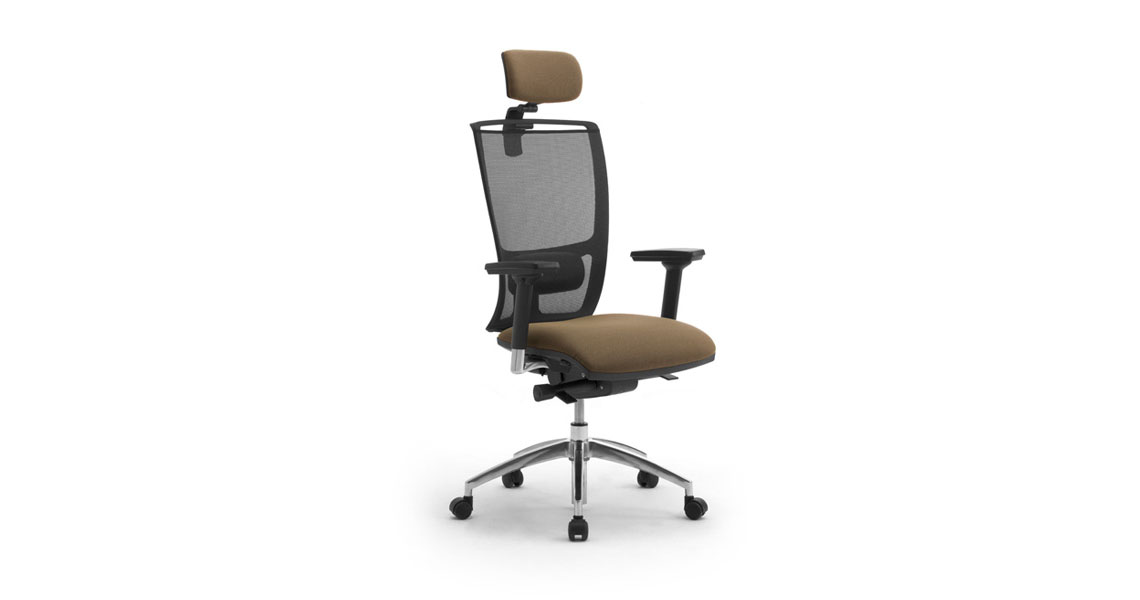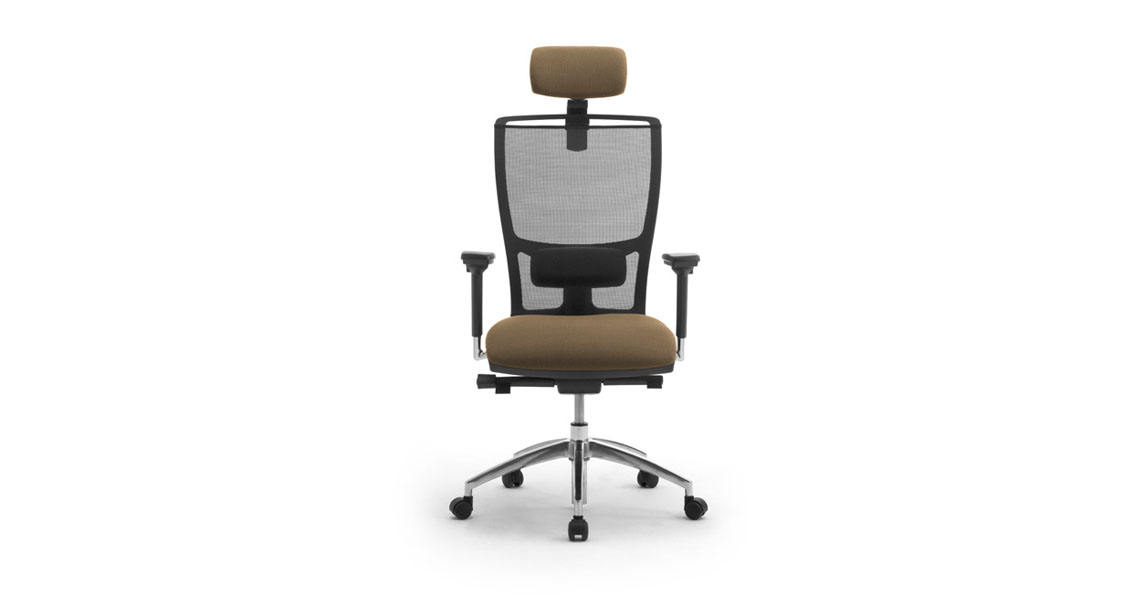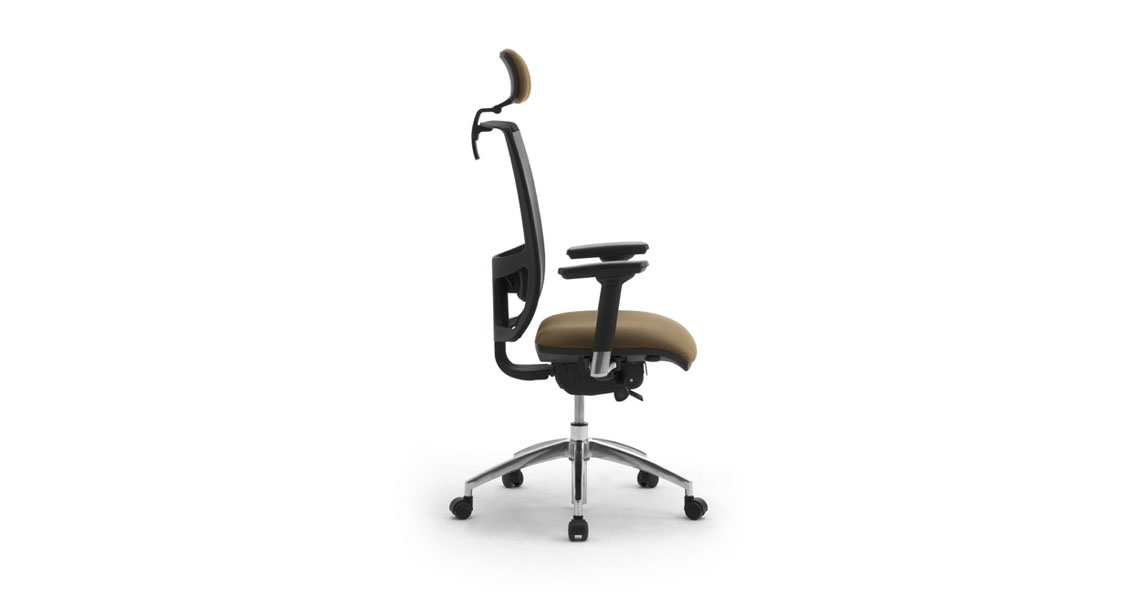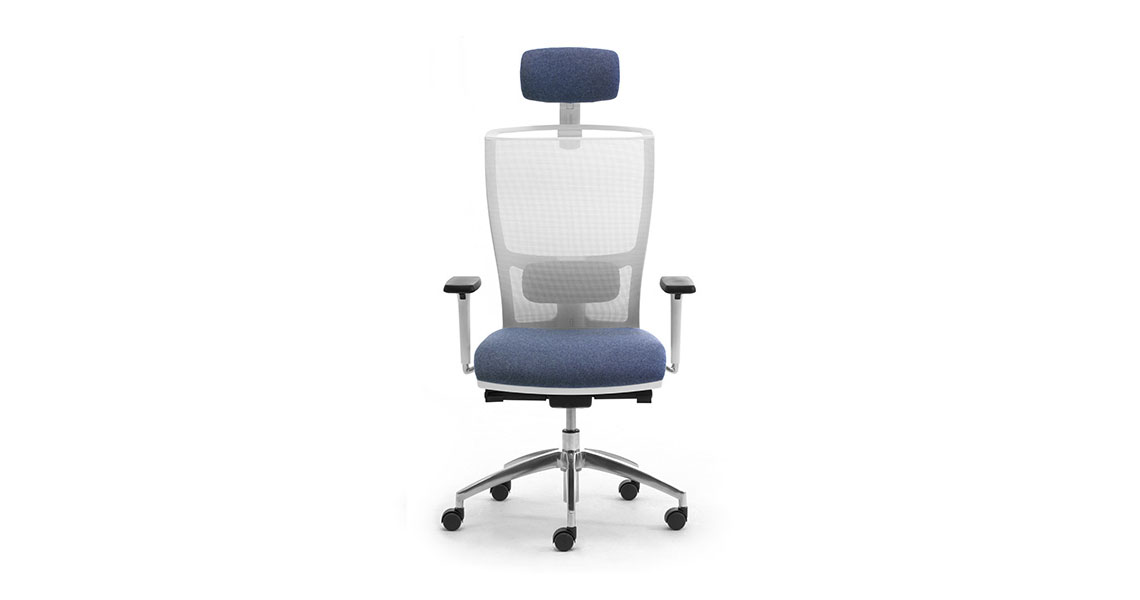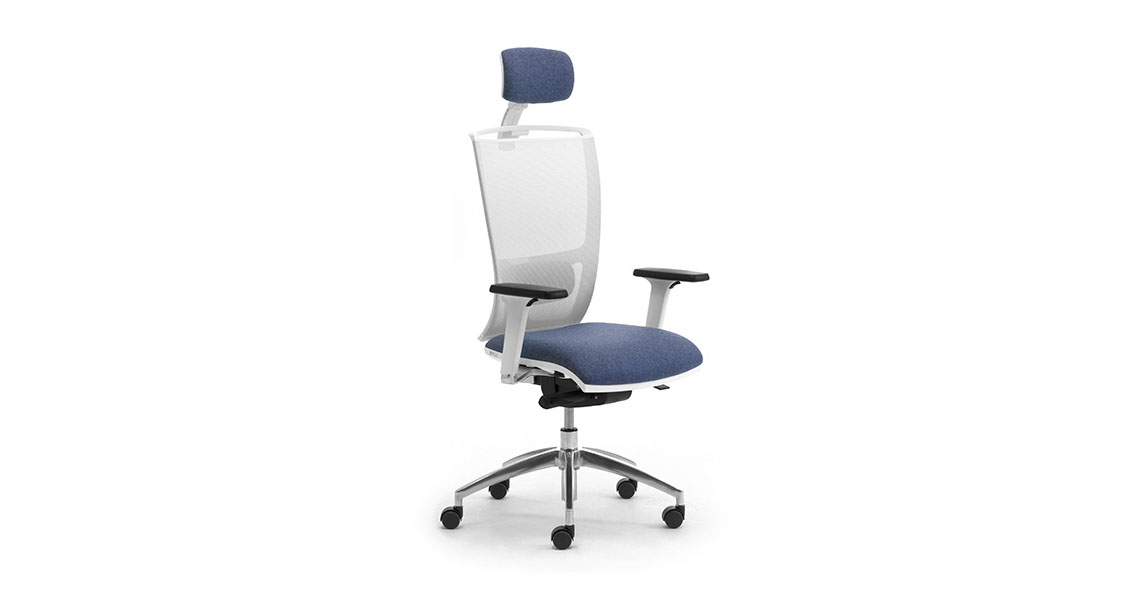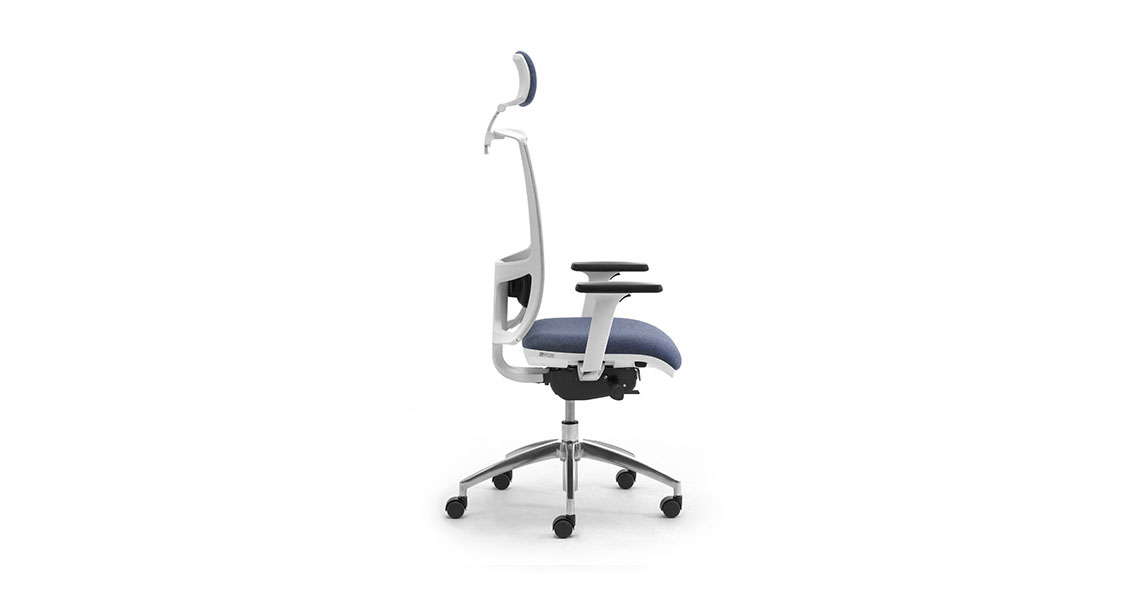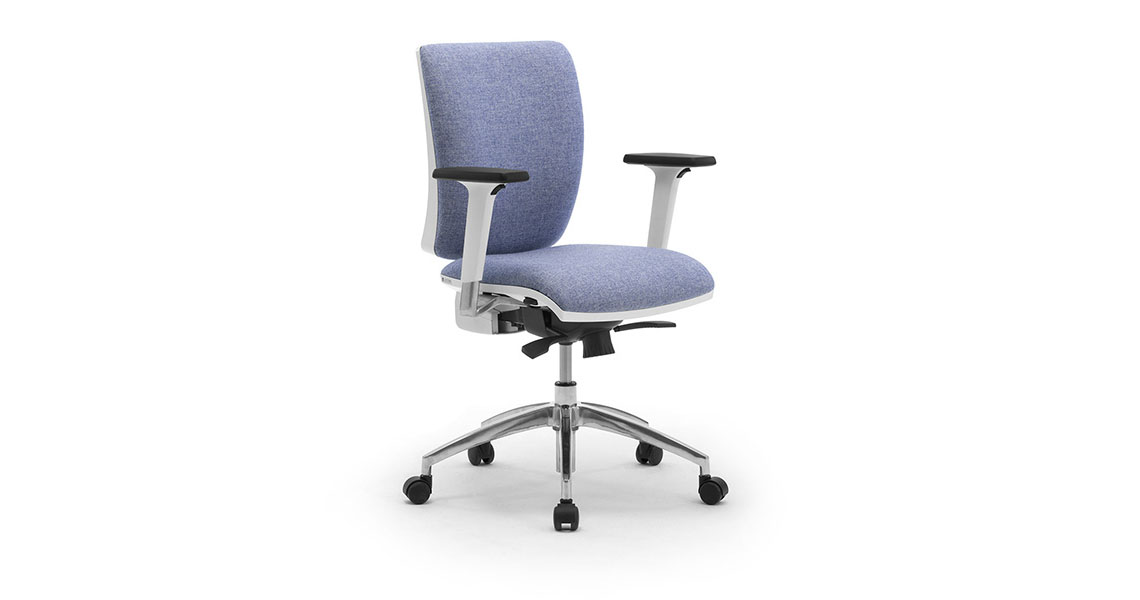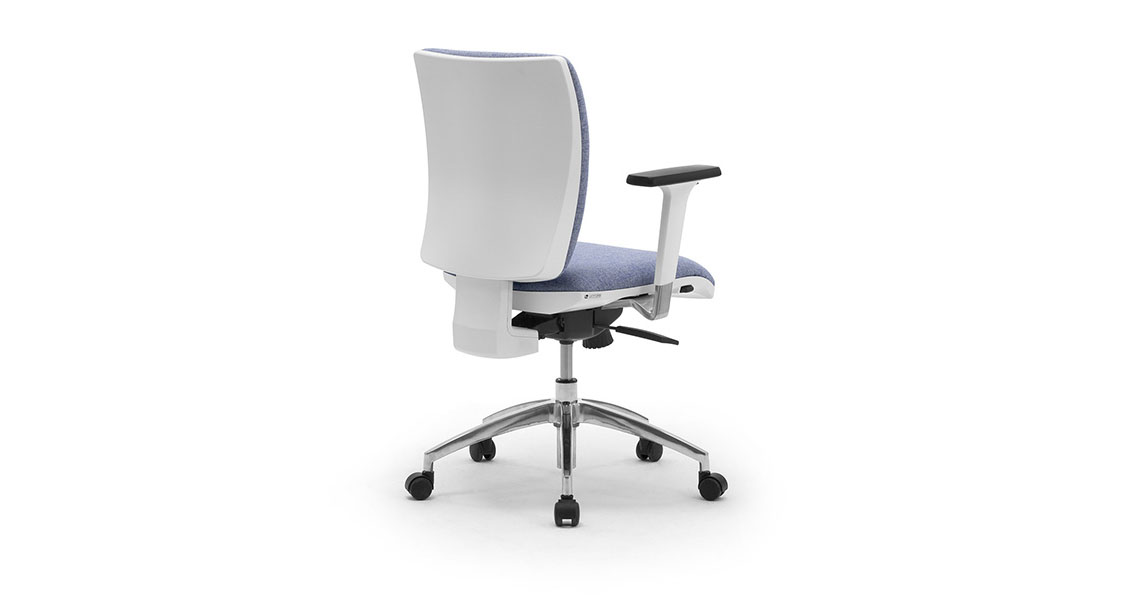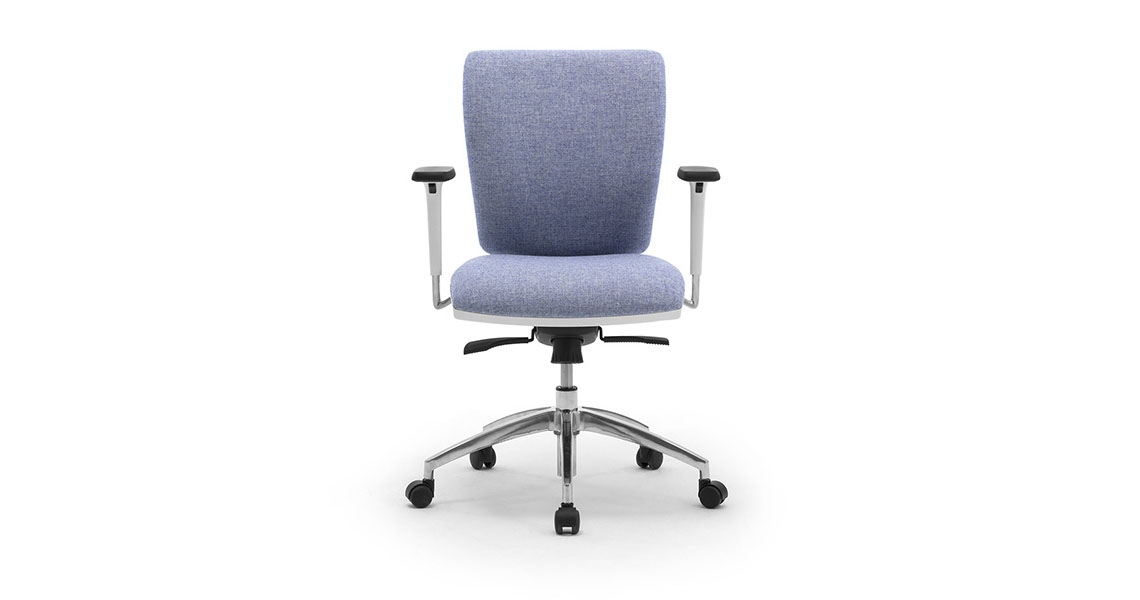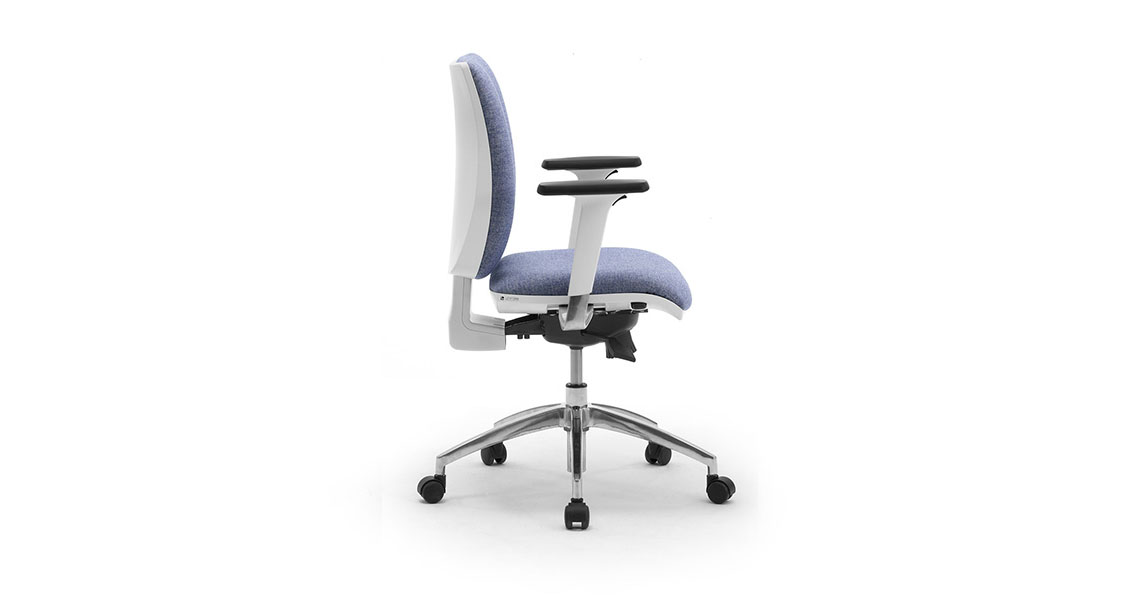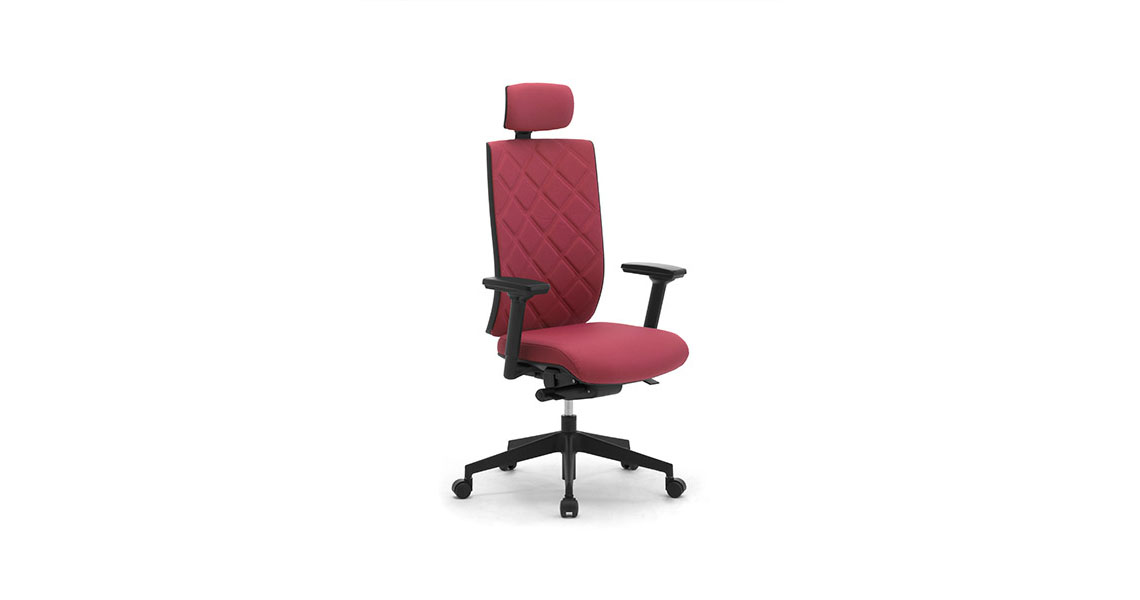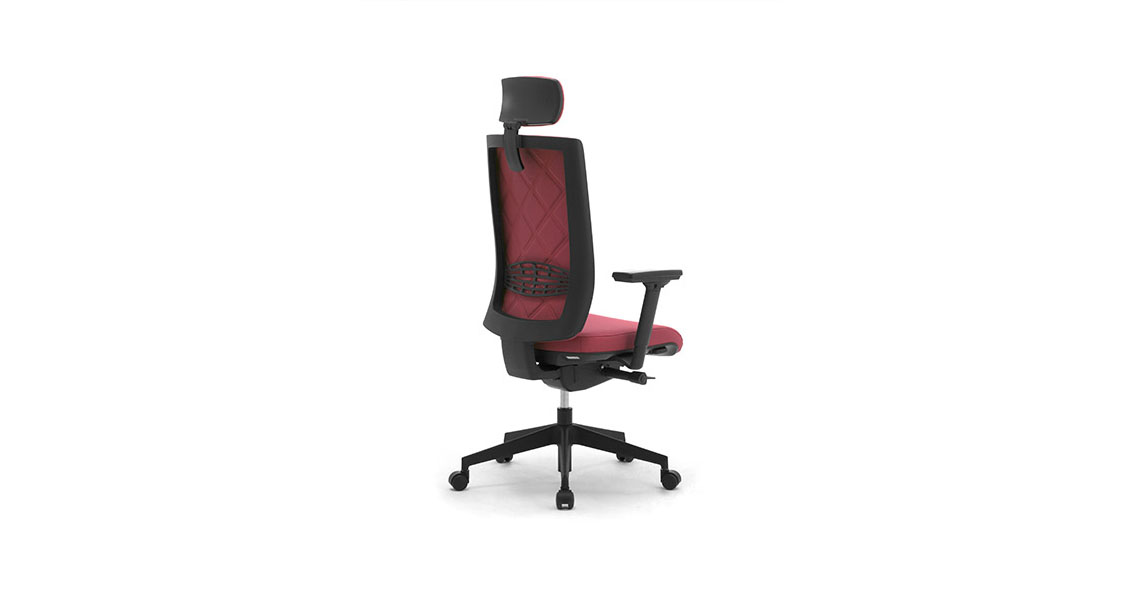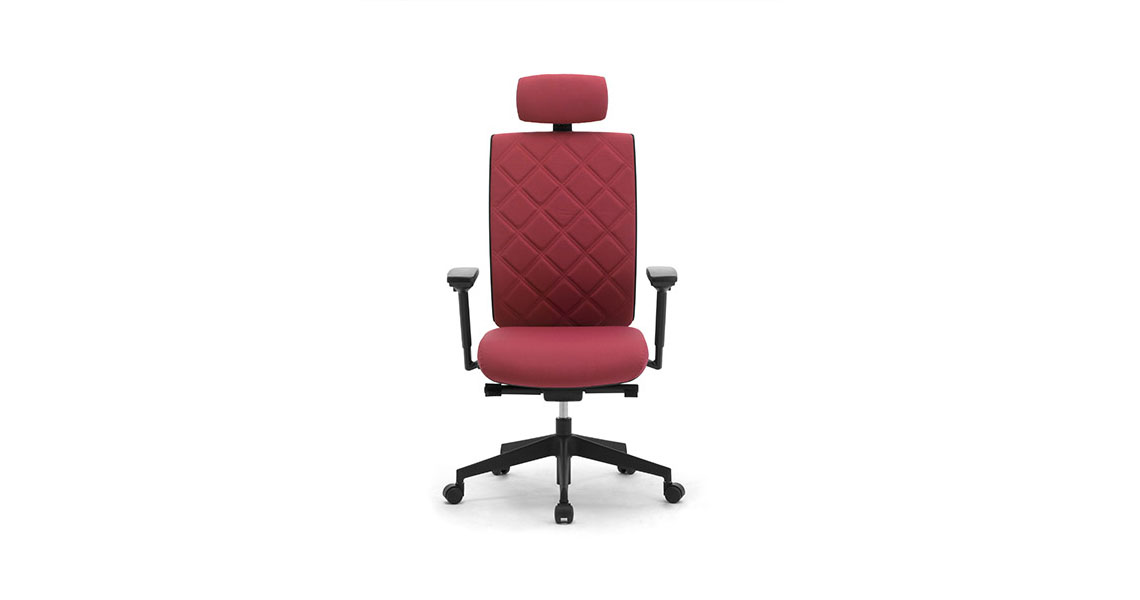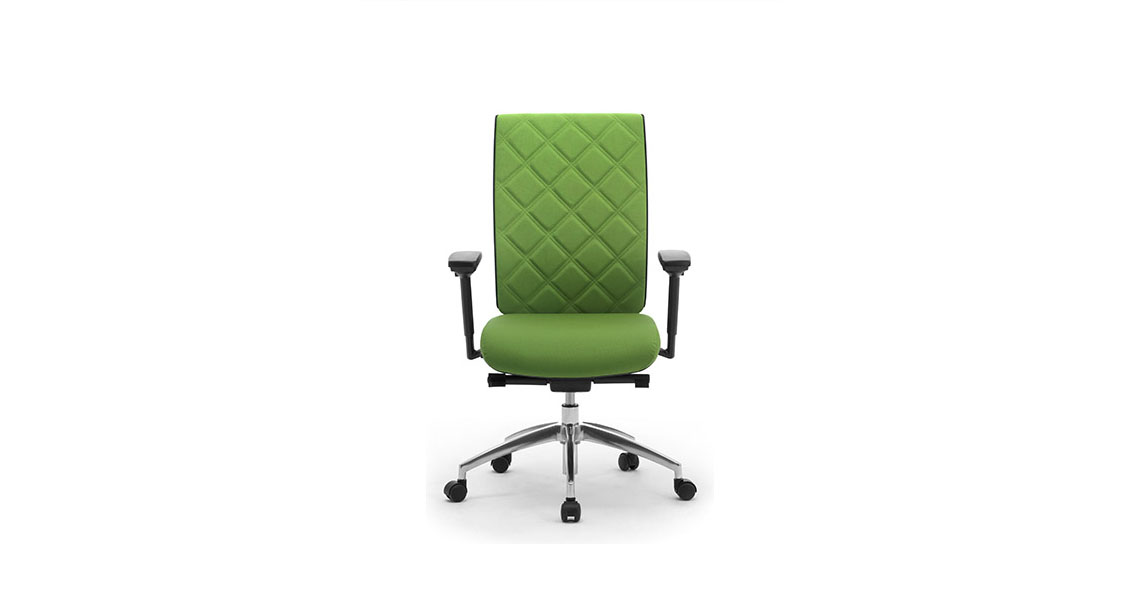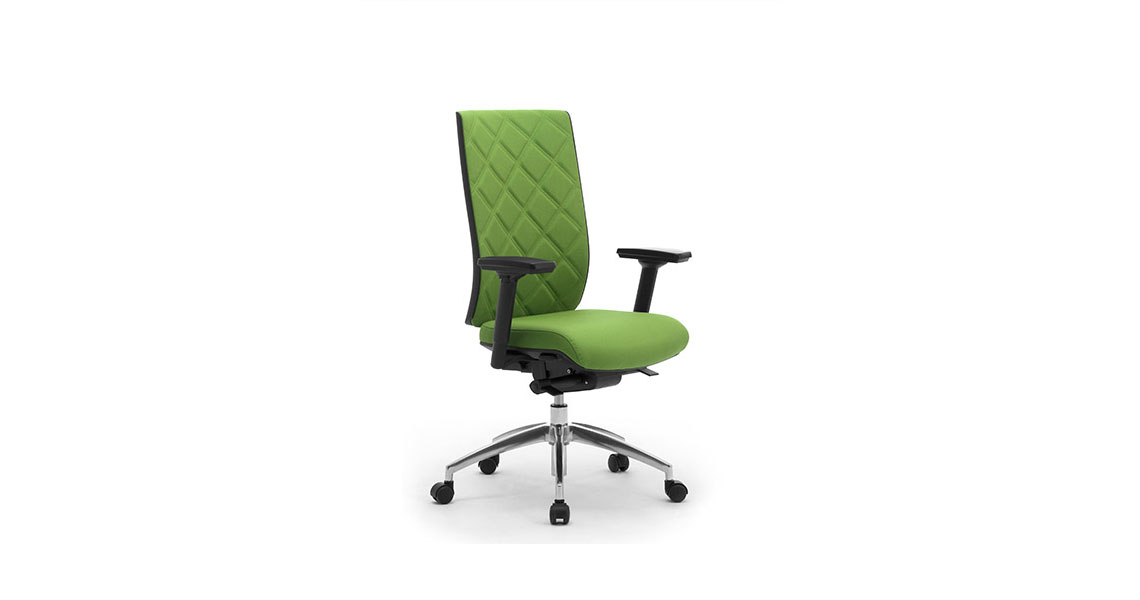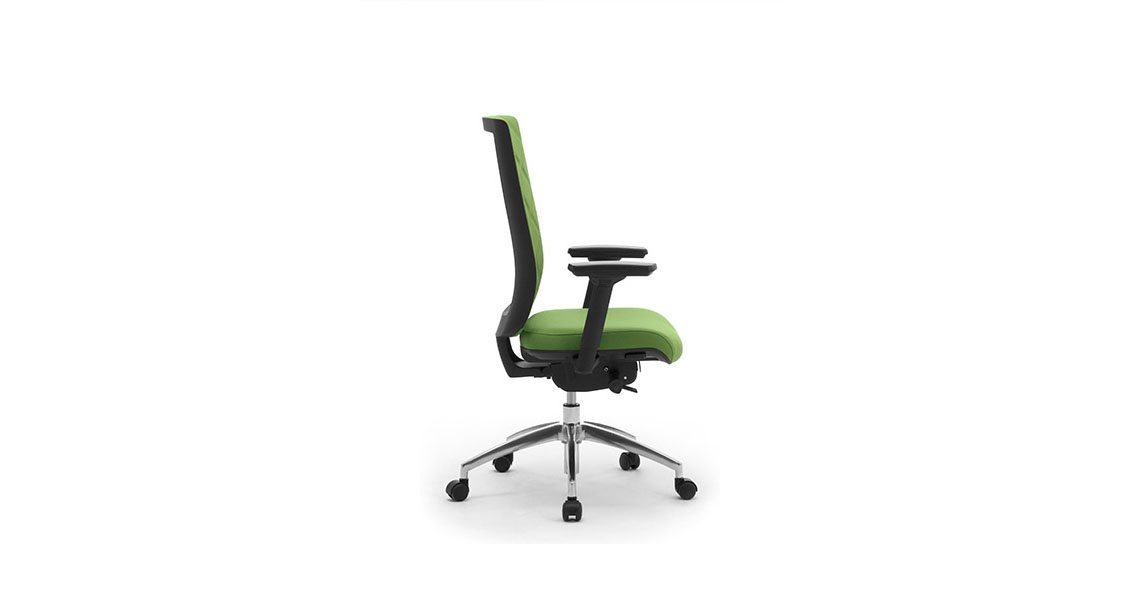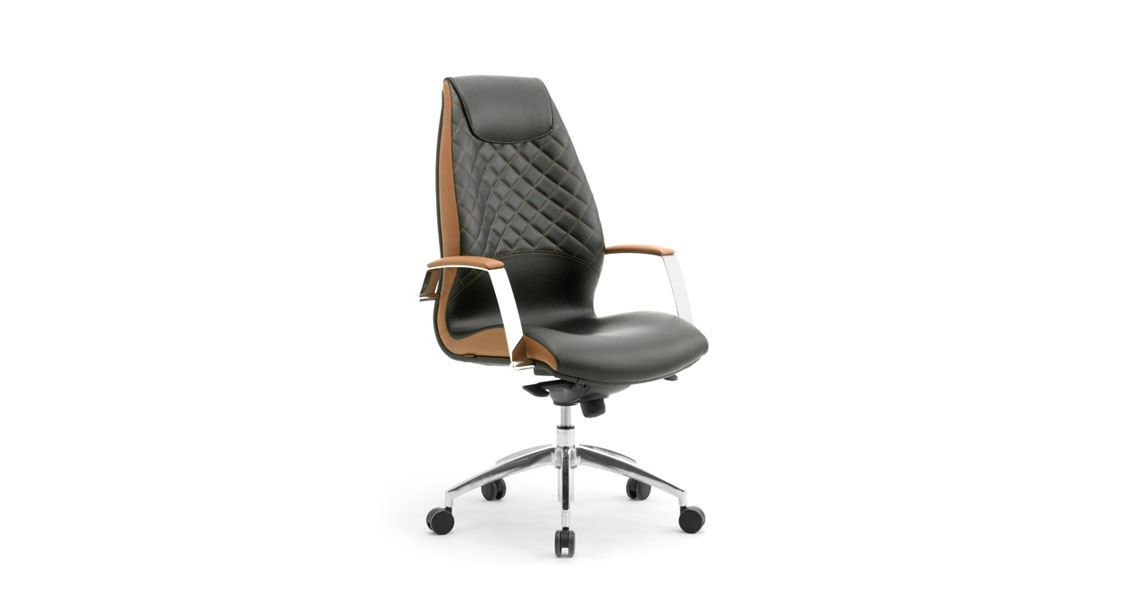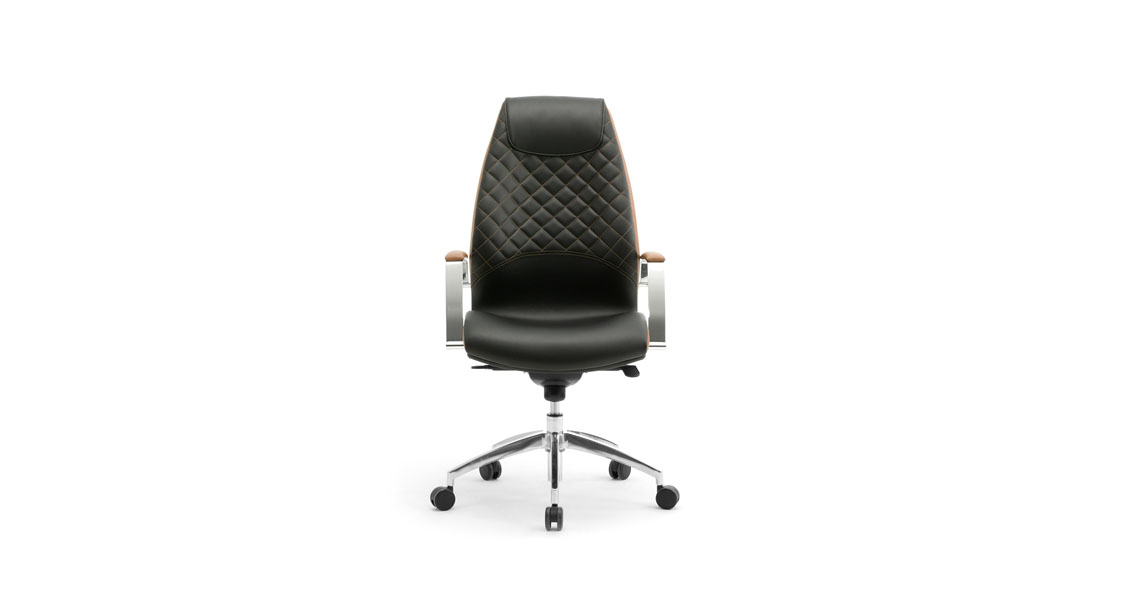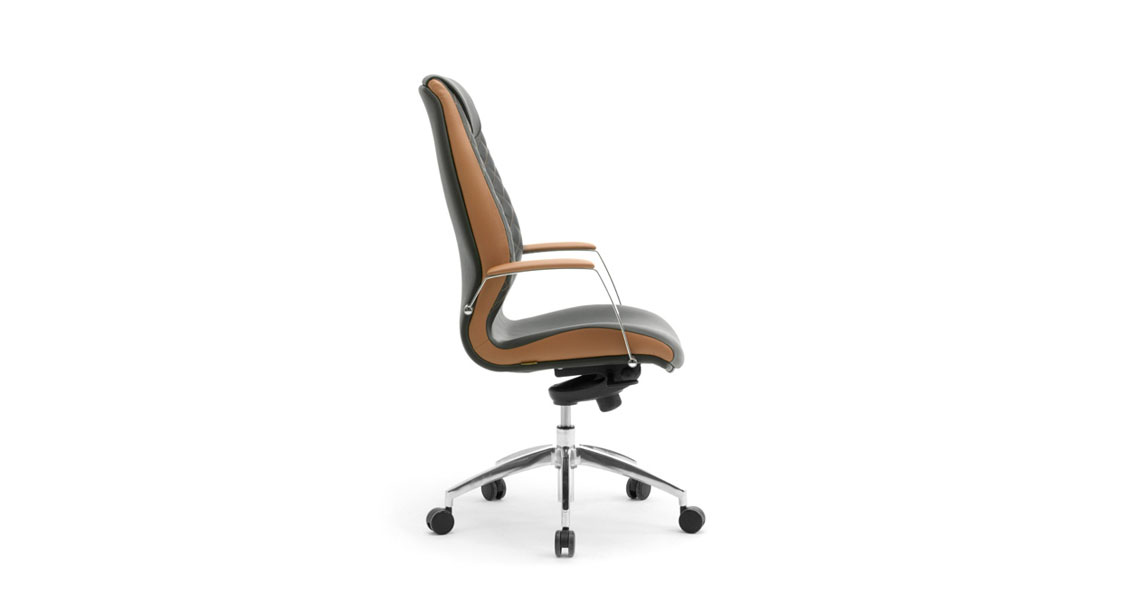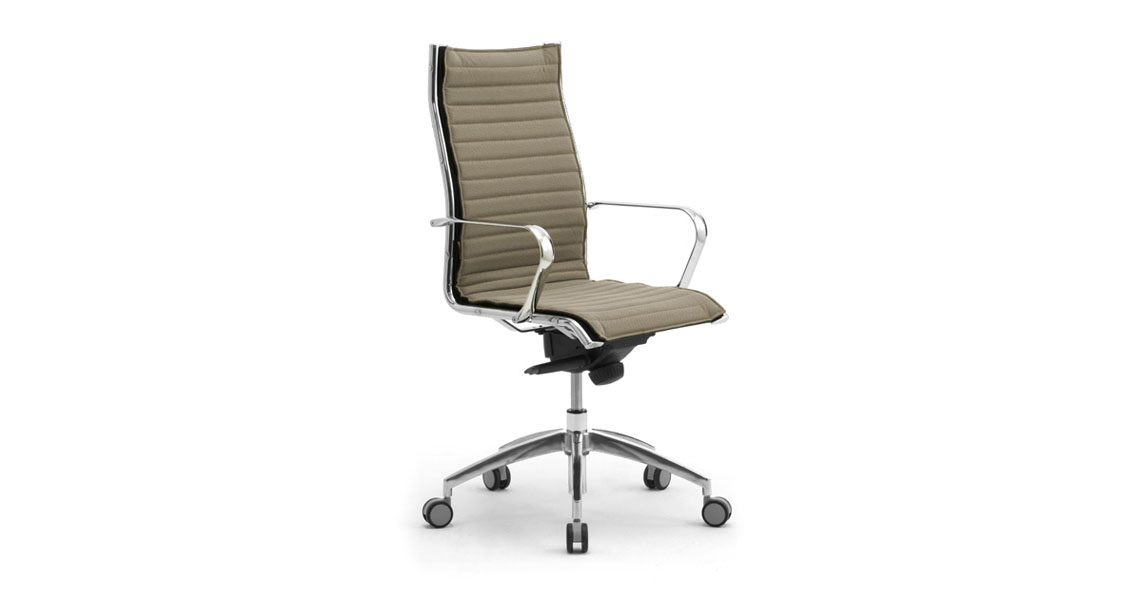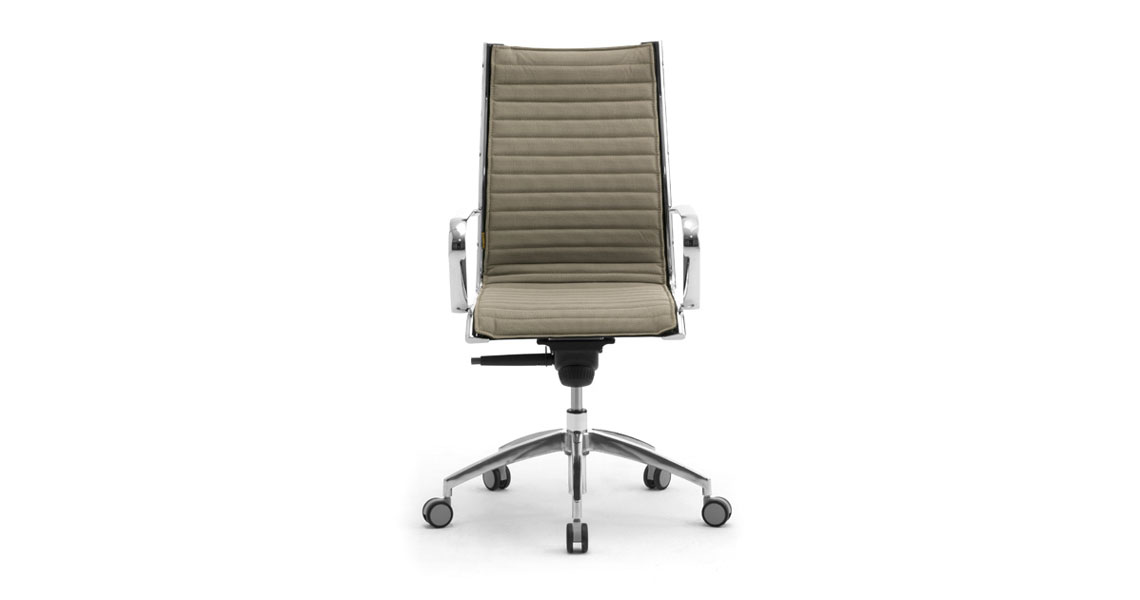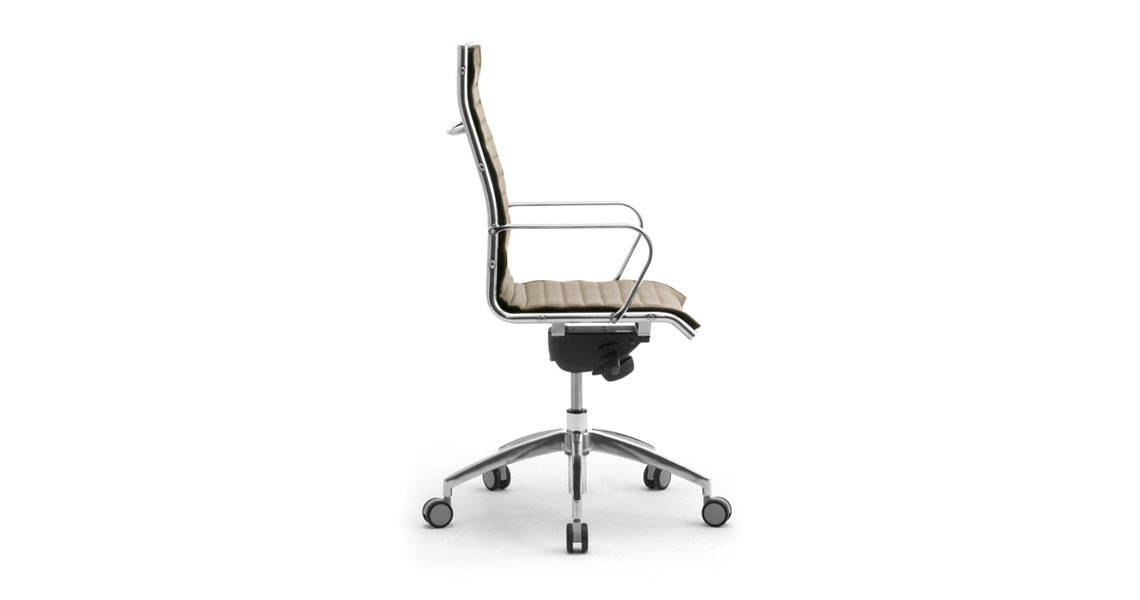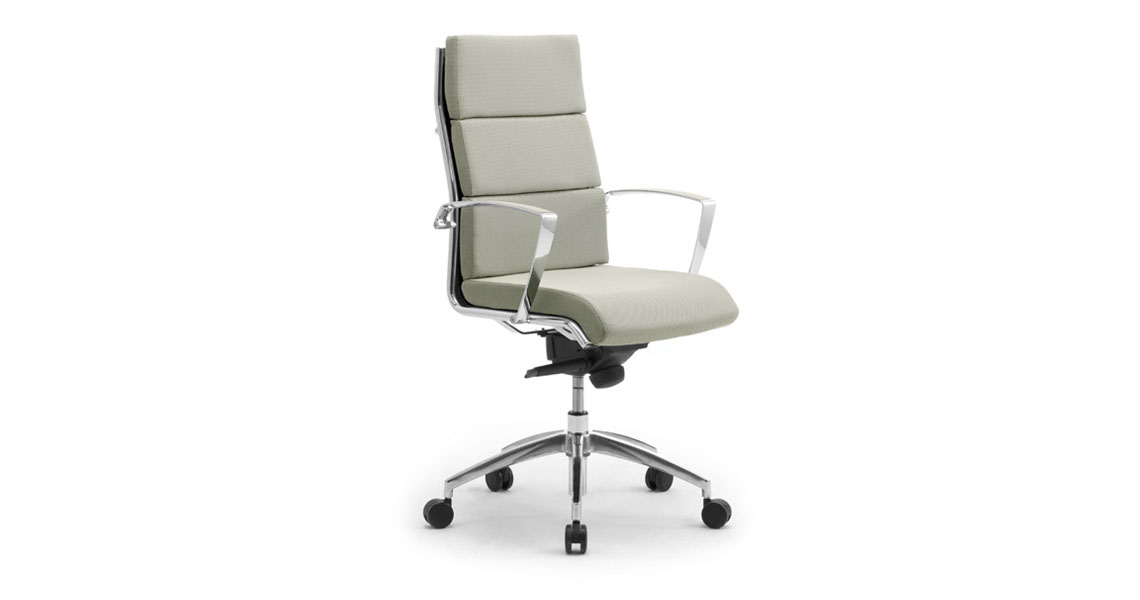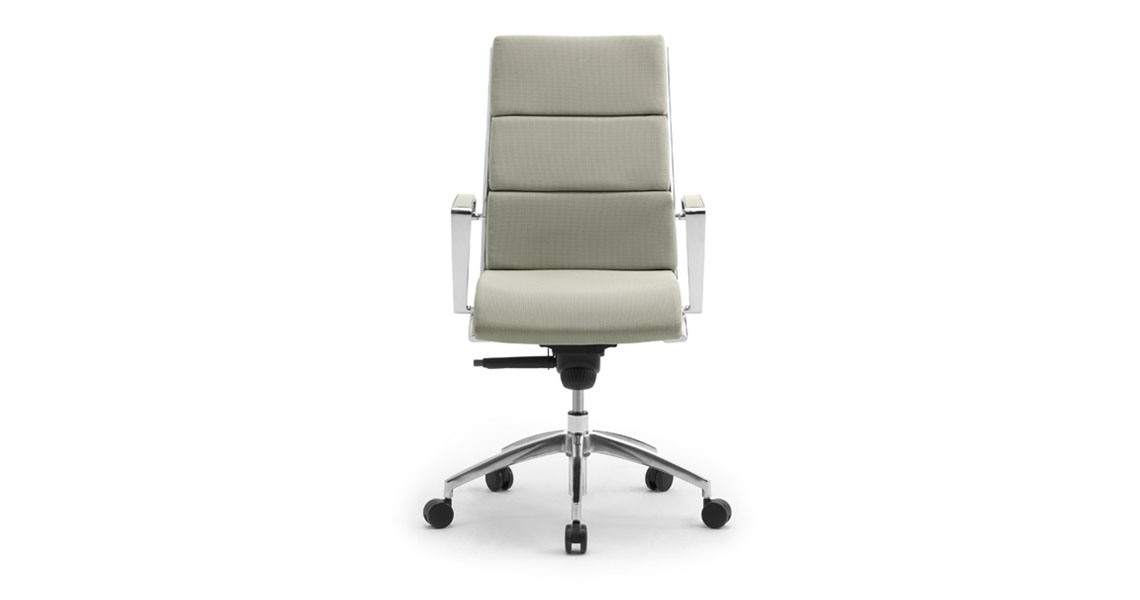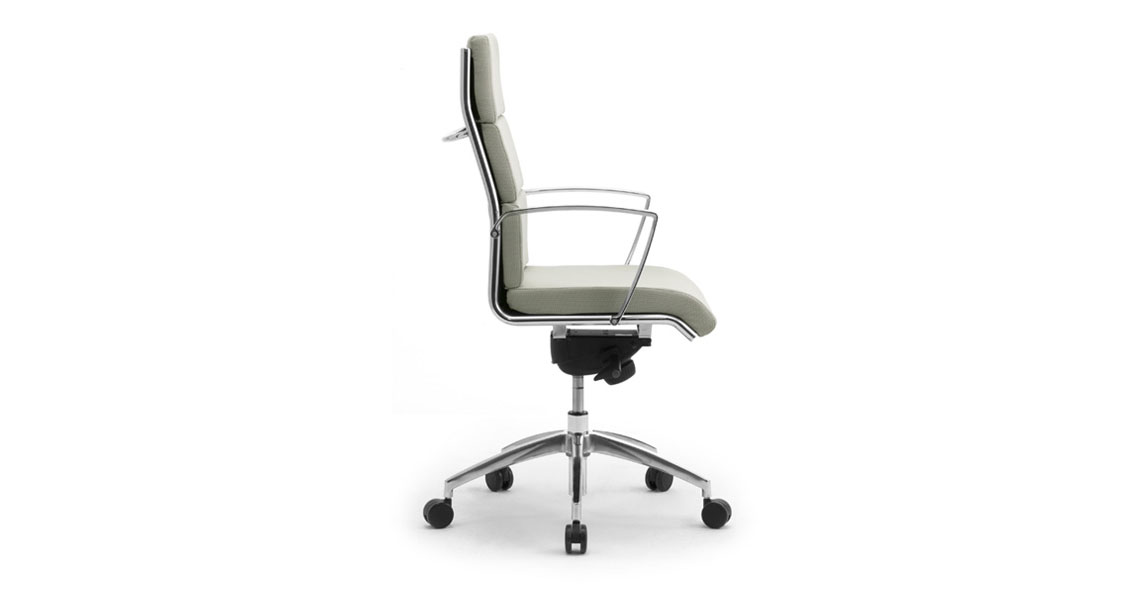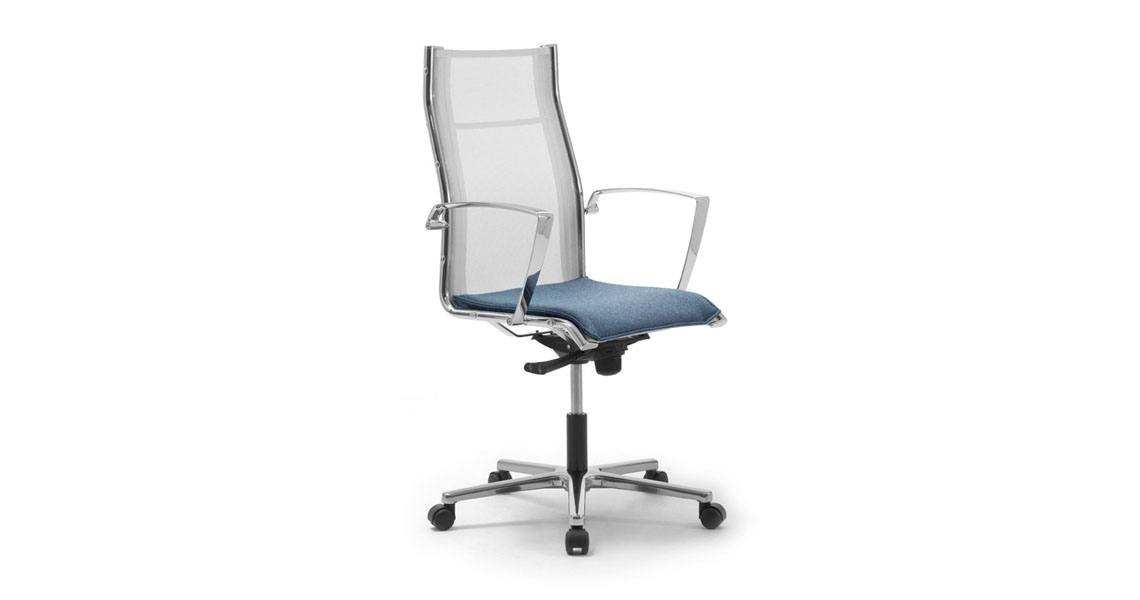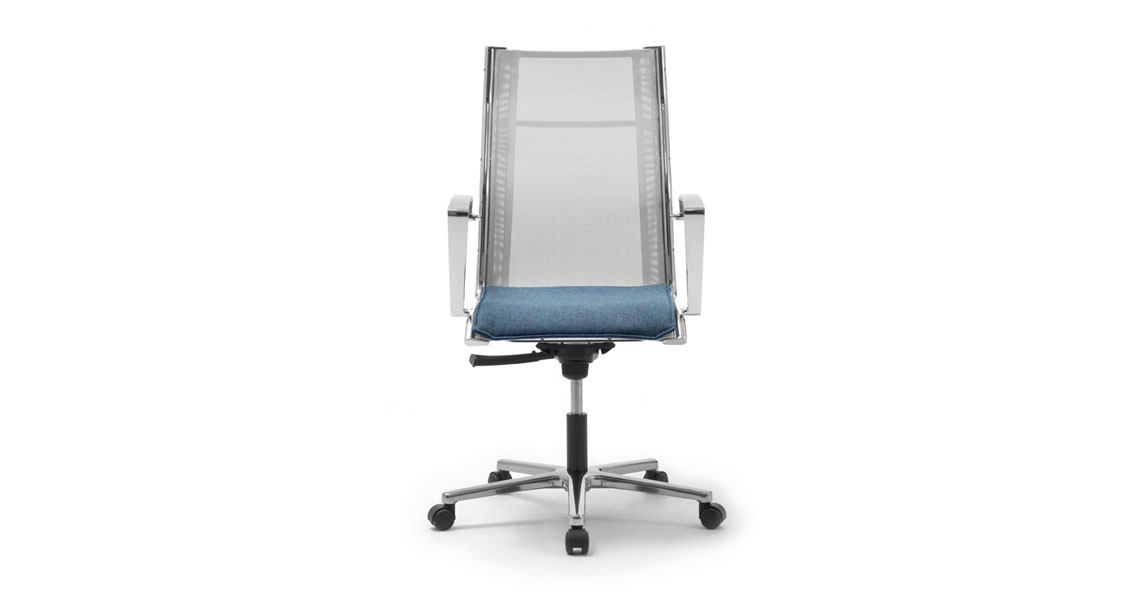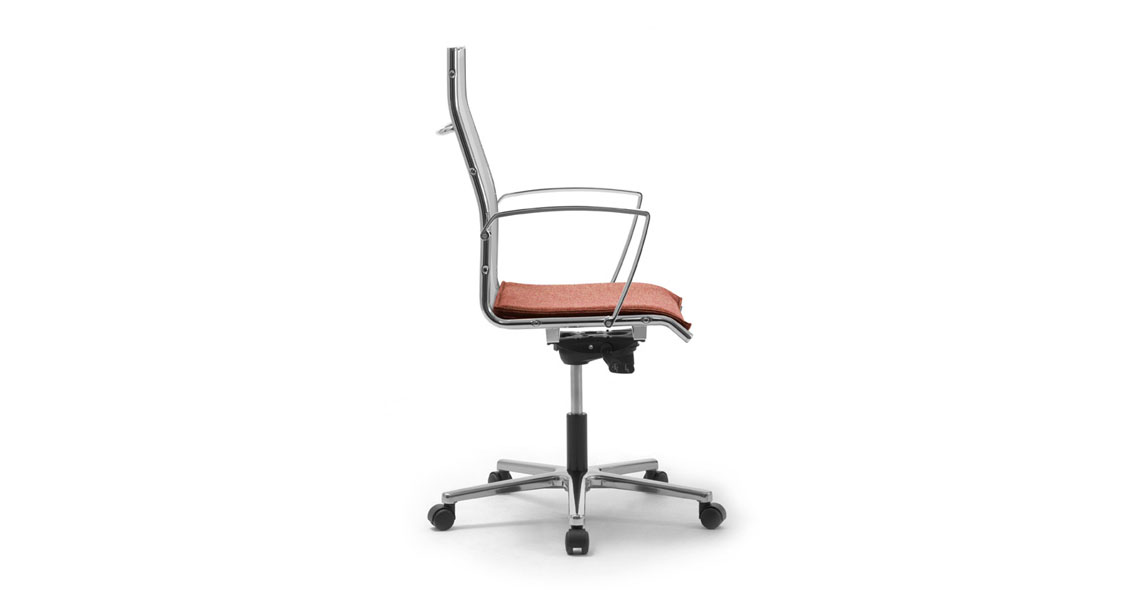swivel chairs and task seating
ERGONOMIC CHAIR, WHAT IT IS AND HOW TO CHOOSE IT
We usually sit down to work on a personal computer, to discuss and confront with other people, to write, call and, last but not least, to relax and regain energy. Given this, we can easily deduce that ergonomic chair has a main role in both free time and working time. We spend most of our daily life being seated: however this is not a static function but it changes whether we are at work, at home or on a bus. In other words, we can consider it a dynamic activity exactly like walking, running or sleeping. To carry out all these actions we need essential tools which can adjust to the user physicality (for example the correct footwear for sport, the right mattress to sleep, etc.), and we can apply the same concept when sitting down. When we sit down it is fundamental to have the right ergonomic chair that can guarantee a posture which should be personalized and appropriate to the user's anthropometric characteristics. If we think about the influence that the environment in which we operate has on our personal productivity, we realise how important the ergonomic chair is, also because of its ability to guarantee, thanks to its mechanism, the best adjustment for the user.
How to choose the right ergonomic chair to better support your back
The design of the work ergonomic chair is today strictly regulated by the italian legislation (D.lgs 81/2008) and European legislation (EN 1335 1-2-3): this implies that there is less and less space for the personal interpretation of the comfort concept. These legislations establish regulations that manufacturing companies have to follow when designing ergonomic chairs which guarantee the correct posture concerning the user physicality. Leyform gathered this challenge by being committed to designing and producing ergonomic chairs which are both pleasing to the eye and able to satisfy the main ergonomic requests of home, office, visitor and community users. This has been proved thanks to the certifications released by CATAS, the main laboratory in Italy which is recognised by the Italian Ministry of Research and Development as HIGHLY SPECIALISED.
Ergonomic chair, what it is and how it has to be
Comfort and a proper posture are often neglected when we are on a desk to work, meet other people or study, and this implies negative consequences on our health. During working or studying hours we spend plenty of time on a chair, which is often uncomfortable and not really ergonomic. In this situation it's easy for many body parts to be severely tested. If we don't have an ergonomic chair complying with the norm, this can imply muscular pain such as backake or tendinitis. The design of an ergonomic chair to work on a pc, to confront with other people, to study, call and, last but not least, to relax while waiting for a visit or meeting is today meticulously regulated by D.lgs 81/2008 and European directive EN 1335 1-2-3. Read more...
The ergonomic chair must guarantee that...
- The sole of the foot rest on the floor
- The foot make a 90-degree angle together with the calf
- The calf is approximately vertical
- The calf make a 90-degree angle together with the thigh
- The thigh is mostly horizontal
- The thigh make a 90-degree angle together with the trunk
- The trunk is erect
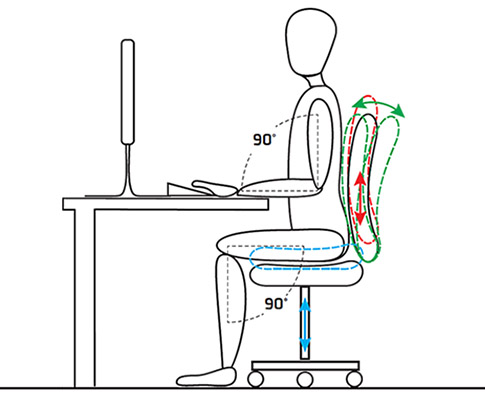
We can obtain all these adjustments for the ergonomic chairs by acting on: tutte queste regolazioni vengono ottenute agendo:
- The gas pump (aka gas piston) in order to adapt it to the user physicality. For example, if you want to adjust the height of the chair, you can simply act on the lever below it to lift it, or sit down pulling the lever to lower it.
- The mechanism: this is necessary to adjust the backrest inclination and, in some models, the seat depth to assure a better leg support. Using the levers placed at the seat sides you can tilt the seat back and forward and lock a position locking positions go from 5 to 14, depending on the model in a precise and stable way.
- The lumbar support: this adjust the push on the lumbar area in order to better support the back during work and study hours. It can be adjusted by a mechanism inside the backrest or lifting/lowering the backrest itself.
- The headrest: ergonomic chairs with a high backrest have a headrest adjustable in inclination, in order to better adapt to the user physicality.
- The armrests: a good ergonomic chair must have armrests adjustable in height, depth, direction (aka swivel armrests) and width, in order to always guarantee an arm and forearm support while working on the keyboard.
The chairs provided with synchro mechanism move the seat/backrest in a synchronized way, assuring that the sole of the foot always rest automatically on the floor.
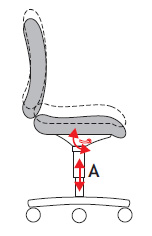
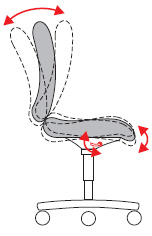
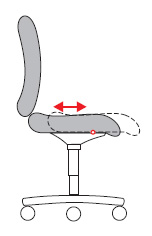
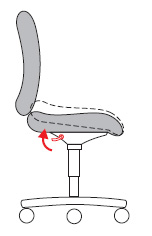
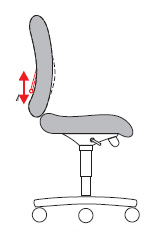
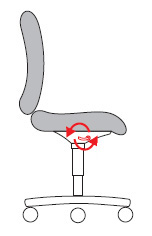
What are the European legislations concerning work ergonomic chairs and what's their purpose ?
European norms EN 1335 1-2-3 are technical documents that define the characteristics that ergonomic chairs must have. These documents are applicable to every country in the EU and they're useful to even each country's technical legislation out, defining ergonomic principles and functional requirements of work chairs, in order to safeguard the users' security and health.
- point 1 defines the dimensions that ergonomic chairs must have
- point 2 defines security requirements that ergonomic chairs must have
- point 3 defines proof methods for ergonomic chairs security
Depending on the required requirements and the result of these proofs, we classify the office chair by 3 groups:
- type A: ergonomic chair with adjustment and dimensional criteria, within a wide range
- type B: ergonomic chair with adjustment and dimensional criteria, within an intermediate range
- type C: ergonomic chair with adjustment and dimensional criteria, within a minimum range
The Italian law establishes the necessity of a compliance certificate for ergonomic chairs concerning the D.Lgs. 81/2008 (requirements for ergonomic chairs to use in workstations with computer terminal use) which is been released for swivel chairs with adjustable lumbar support which are in compliance with type A or B of the EN 1335 legislation.
Which are the standards for visitors chairs as well as seating for domestic and public use ?
- Standard UNI EN 1728, gives the test methods for the determination of strength and durability of the frame of all types of domestic seating.
- Standard UNI EN 10977, establishes a guide to application of EN 1728 in terms of loads and cycles to be applied to seating for domestic and public use. It provides for fi ve test levels according to the applied load.
- Standard UNI EN 13761 specifies the dimensions and safety requirements for offi ce visitors chairs. The standard Standard UNI EN 1022 defi nes the methods for the determination of stability.
- Standard UNI EN 15373 defines the strength, durability and safety requirements for non-domestic seating. It provides for three test levels according to the end use: level 1 "light use" (e.g.: hotel rooms, churches, libraries); level 2 "general use" (e.g.: hotels, cafeterias, restaurants, public places, banks, bars, meeting rooms); level 3 "severe use" (e.g.: night-clubs, police stations, public areas of hospitals, casinos, O.P. homes, sports changing rooms, prisons, barracks).
- Standard UNI 9083/87: drop test
- Standard UNI 9088/87: Chairs and stools. Side stress resistance test on legs
- Test on tabletops: UNI 8594: flexibility test of surfaces.

